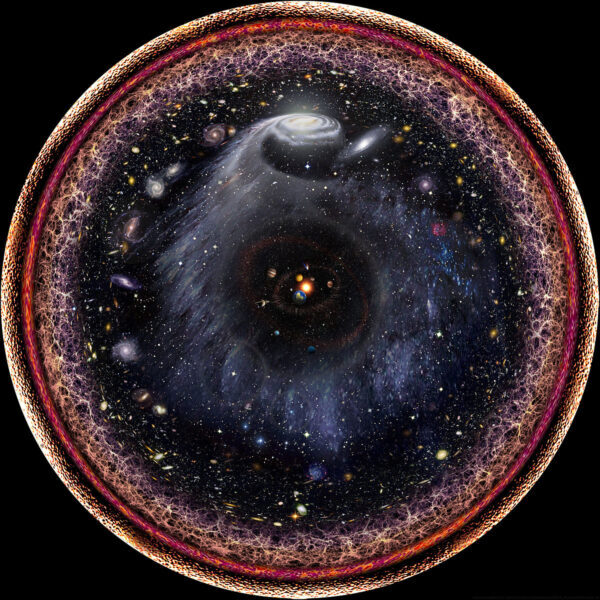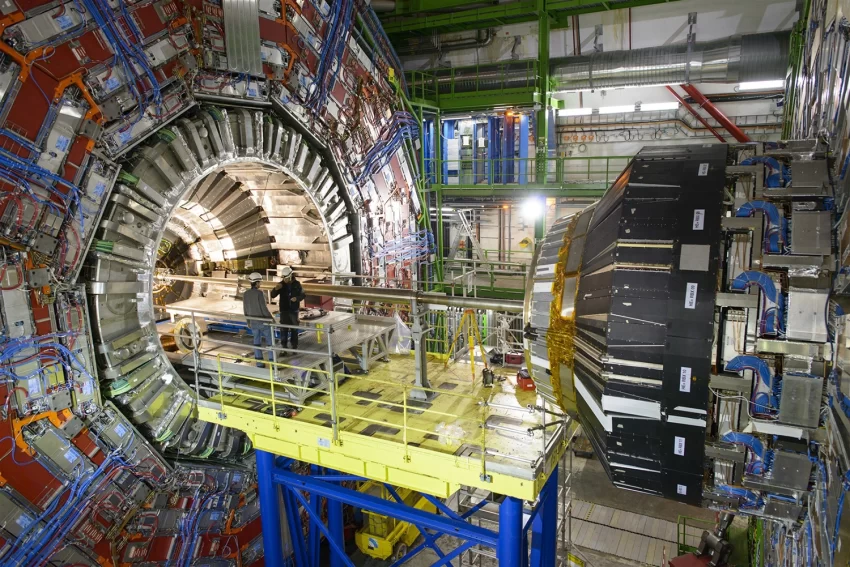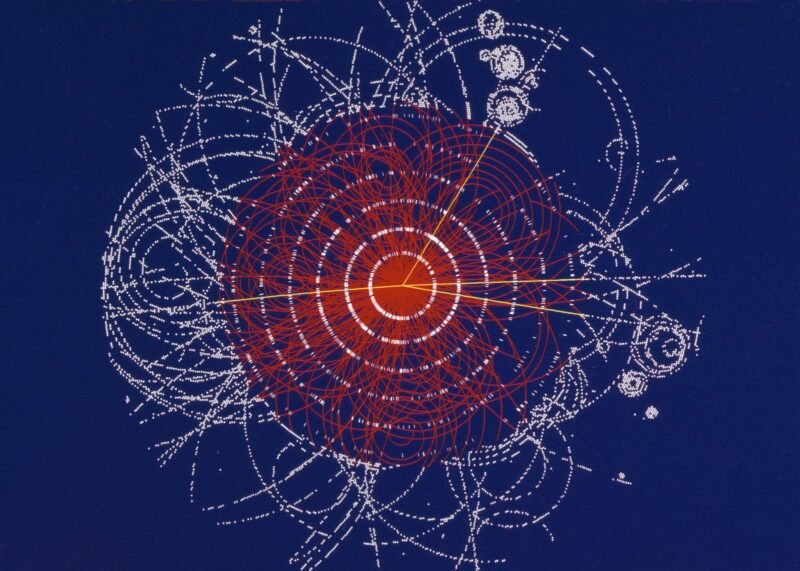
To solve the mystery of creation, the eye of the physicist should look for what really is out there, not what he thinks there should be. – Einstein
Pablo Carlos Budassi born in Argentina (1980), a talented mathematician, musician and artist with many award-winning spatial design works, made a simple drawing of the cosmos for his son’s birthday. He used the logarithmic maps of the physicists, photographs taken by Nasa and his photoshop app. His logarithmic illustration of the observable universe became globally famous. The physicists acclaimed his work and marked it as the simplest up-to-date picture of the universe. In the center of this picture lies our sun and the solar system surrounded by our galaxy, Milky Way with Perseus and Andromeda nearby and other galaxies, all of which are englobed by the Cosmic Web and the Big Bang’s invisible plasma on the edge.
Us human beings inhabiting the earth, we are included in this picture as invisibly infinitesimal particles on our small planet barely spotted in the solar system and which is not distinguished by the naked eye.
In 2012, the same year that Budassi created his most celebrated illustration of the universe, a ground-breaking experiment was conducted at CERN, in Switzerland, one of the world’s largest and most respected centers for scientific research. The massive device of unprecedented energy level – Large Hadron Collider – was set up to explore the existence of the Higgs particle.

The Higgs particle then became renowned as “ the God particle ” whose existence was formerly doubted by contemporary physicists. They believed that it had no mass because it remained invisible at all means that science set up to measure it. Yet, they took it into account in good faith – like the imaginary number i – to test their equations and run models of the universe.
The proof of its existence in 2012 launched a mind-bending revolution in physics. It prompted the perennial question of what was out there before the Big Bang, and equipped new research to peruse the myths of creation once again. Echoing Einstein who stated 100 years ago that in order to solve the mystery of creation, the eye of the physicist should look for what really is out there, not what he thinks there should be.
The phenomenal Higgs Field with its esoteric particle was found to be “the efficient one” because it caused other particles to acquire mass and “ existence ” by drawing them together, and by “making them move ” in meaningful ways as observed by the scientists. This ground-breaking experiment sparked hope to physics’ quest to unravel the mystery of the creation. It paved the way for traversing back to the beginning of the universe, and ultimately trace where our particles come from, and where they go.

The experimental illustration of the Higgs particle above resembling the creative illustration of Budassi where universe is reflected as a scintillating sparkle in the pupil of the eye.
Duygu Bruce







